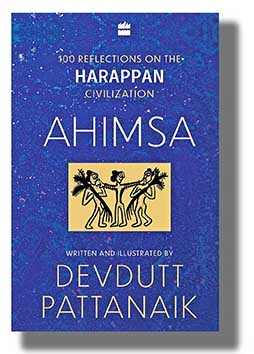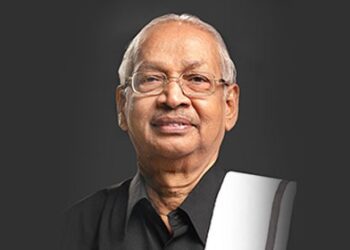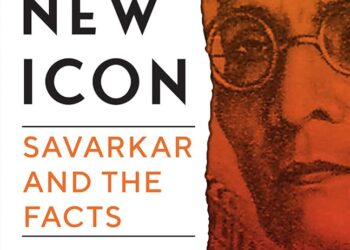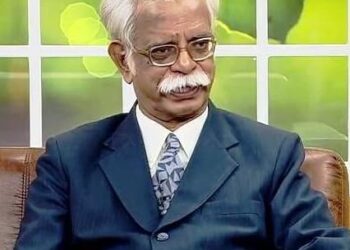Ahimsa: 100 Reflections on the Harappan Civilization By: Devdutt Pattanaik
Publisher: Harper Collins India
Price: Rs.499 Pages: 272
Mayank Jain Parichha
The Harappan civilisation, or Indus Valley Civilisation (IVC), has always fascinated historians for its urban planning and somewhat organised lifestyle and trade, without any known depiction of war or violence. Does this make them the first non-violent civilisaton? According to Devdutt Pattanaik, a renowned mythologist and writer, it does. In his latest book, Ahimsa: 100 Reflections on the Harappan Civilization, Pattanaik departs from his image of mythology writer to offer insightful reflections on Harappan civilisation.
In September 2024, John Marshall, Director General of the Archaeological Survey of India, told the world about Harappan Civilisation. Although the existence of a civilisation as ancient as Mesopotamia and as grand as Egypt was in itself a great moment, a lot of things remained a mystery. One of the mysteries was the peaceful nature of this civilisation.
There was no sword or even artwork of war/violence found in Harappan Civilisation. Pattanaik says, “Two tiny artworks, found in two distant cities. Mohenjodaro and Kalibangan, depict two humans fighting. In each case, a woman stands between them.” He adds. “Sumerian (another Bronze Age civilisation in the historical region of southern Mesopotamia) artworks glorify war. Such artwork is not found in Harappa. When two humans fight, there is always a woman between them.”
A unicorn was found in almost 80 per cent of the 2,000 stamp seals from the Harappa. This unicorn is shown sniffing perfume from an incense burner. “Perhaps the Unicorn was the symbol of horned hermits of Harappa who manage inter-clan and inter-city affairs.”
This assumption that people from the Harappan civilisation followed monasticism feels convincing to an extent. Pattanaik through archaeological discoveries and details known so far sounds content that perhaps the lifestyle of the Harappan Civilisation has a huge impact on various cultures and religions. It’s not difficult to assume that Harappans would have been supportive of hermit life, renouncing hoarding and no traces of war and romance. However, there are images of rivalries.
This book is not a historical account, and for readers some reflections may feel a bit of a stretch. In fact, Pattanaik does not claim them to be all verified historical arguments. “These are reflections, based on frameworks that I have developed to better understand various Indian and Western mythologies. These are not free of my prejudices,” he writes. One of the reflections that he presents is that, to achieve high level homogeneity over a million square kilometres for 700 years, Harappan Civilisation might have used stories “to get to voluntarily domesticate themselves.”
Although this thought appears great and convincing, it is difficult to digest for historians. The question, however, r`emains: why are attempts not being made by archaeologists and historians to find an answer to those questions? Pattanaik believes that is because of subtle eurocentrism that still exists.
“Professional archaeologists are eager to keep every mystery alive to ensure funding does not stop. No one wants to tell a truth that is at odds with the global (western?) discourse.” Pattanaik also points out challenges of so-called systemic history writing and biases of historians and archaeologists, like male historians might ignore queer artwork, capitalist historians might look for heroic leaders.
Pattanaik has a celebrated image of simplifying mythology in simple language for common readers. This book is his attempt to understand and reflect on the Indus Valley Civilisation. It offers a quick reflection on Harappan imagination, geography, economics, politics, art, and humanity. His mastery in drawing simple and convincing dialogues in writing is visible. If one is looking to understand Harappan civilisation and the mysteries around it, this book is great, and does not manipulate readers into believing anything. These are simple reflections he offered to readers to ponder upon. Such writing is always interesting.









